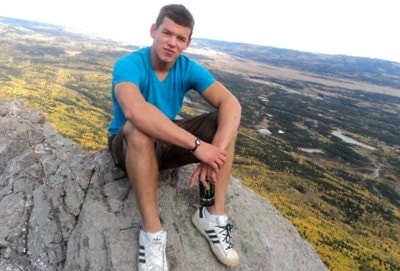Five or six men drove Myles Murphy out of town and, in the middle of nowhere, beat him and said they would kill him if he didn’t pay them $5,000 by a certain date.
He had been using some of the drugs he was supposed to be selling and they didn’t like that he was ripping them off, so they added a “dummy tax” to what he owed.
On another occasion – the first day that Myles had turned to selling hard drugs – two men stuck a gun in his face, threatened to kill him, and then stole his supply.
Addictions to OxyContin, cocaine and heroin helped him forget about his problems.
Now clean since Dec. 6, 2010, Myles, 19, is speaking out about his past to encourage others to change their lives.
“No matter how much you think there’s no one to turn to, there’s always someone to ask for help.”
He said his path of crime and addiction began with ecstasy. He was only about 15 the first time he tried it.
“It made me feel good and it took me into a comfort zone where I could make friends with people I wouldn’t normally talk to.”
It became a social thing, something he and his group of friends would do every weekend, along with smoking pot and drinking.
They never thought about the potential risks, but those got his attention one morning after taking ecstasy the night before.
He was shaking, his arms and hands were numb, and his body was alternating between being hot and cold.
He didn’t want to tell his mom so he talked to her friends that were over visiting, and they drove him to the hospital.
 Myles had been diagnosed with an irregular heartbeat at the age of 14, and doctors warned him that using ecstasy could kill him.
Myles had been diagnosed with an irregular heartbeat at the age of 14, and doctors warned him that using ecstasy could kill him.
“It did scare me ... I remember crying to my mom’s friend that if I don’t stop this, I’m going to die.”
It wasn’t long before he was using again. Ecstasy was cheap and he didn’t want to feel left out around his friends.
He began selling it, along with pot, often lying to buyers about its potency. He would tell them it was “triple pressed,” meaning it contained the strongest dose of MDMA, although he had no idea what ingredients the product actually contained.
The ecstasy he sold was often labelled with cartoonish pictures – such as buddhas or characters from The Simpsons animated TV show – or made into shapes, including the characters from The Transformers.
Myles would sell pot and ecstasy to kids as young as 14.
He turned to using and selling harder drugs after trying cocaine at a party when he was 17. Dealing was a way to finance his own addiction. He would often unload $5,000 worth of drugs in a day and a half, and would pocket 20 per cent – the kind of money he could never make at a “normal” job.
He never thought about the harm he was doing.
“A lot of it became ego. Kids would be scared of me, and it would make me feel important, but it all started to come apart. I was just a dealer.”
He began using more product than he was selling. He went to a detox centre six or seven times, but never followed through with treatment until he turned 18.
“I owed a lot of money. It just kind of hit me: I’m just a loser. Who’s ever going to want to be around me? I’m going to die.”
Myles decided to put as much effort into getting sober as he did on his addiction. He moved away from Abbotsford, and completed a treatment program. His days are now focused on attending sobriety meetings, working towards a possible music career and connecting with others who are a positive influence.
“I know my past, and I don’t judge myself on that. I can only focus on what I can do to change. I just focus on my future.”
